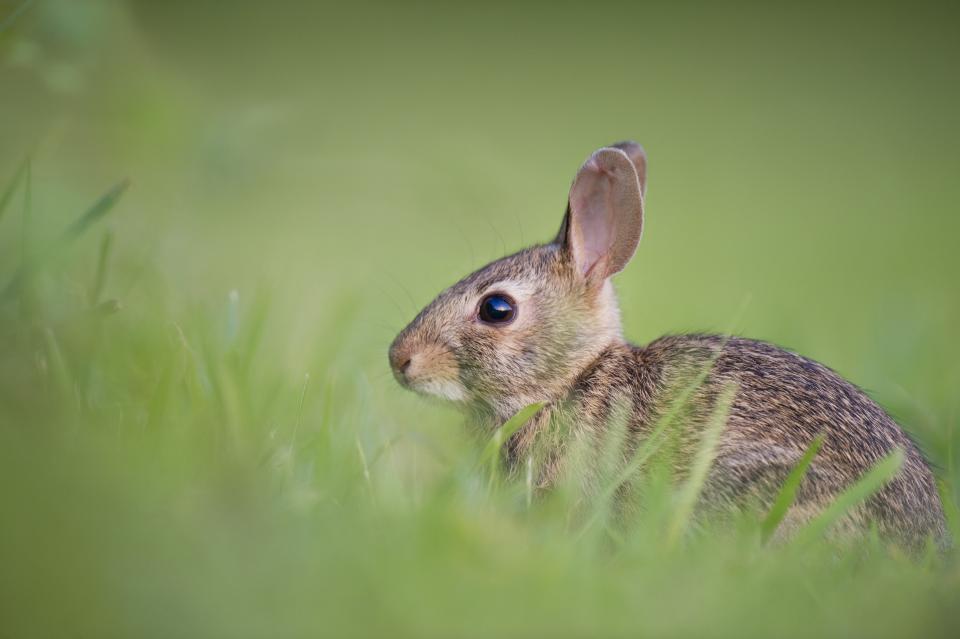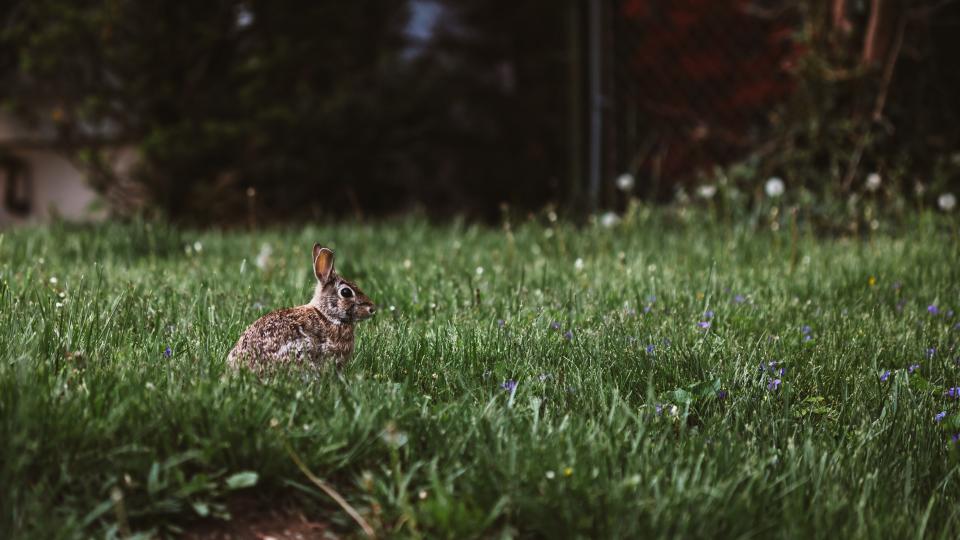The idea of a cat and a rabbit peacefully sharing a home might seem idyllic, but the reality can be more complex. This comprehensive guide explores the potential for harmonious cohabitation between these two vastly different species, examining the factors that influence their compatibility and offering practical advice for successful integration. We will delve into the inherent differences between cats and rabbits, explore the potential risks and rewards of introducing them, and provide strategies for promoting peaceful coexistence. Ultimately, this guide equips you with the knowledge and tools to make informed decisions about the compatibility of your feline and lagomorph companions.
Part 1: Understanding the Natural Differences

1.1. Predatory Instincts and Prey Behaviour
Feline Predatory Drive: Cats are obligate carnivores, meaning their bodies are designed for hunting and consuming meat. This drive is deeply ingrained in their instincts, and even the most pampered house cat retains a natural urge to chase and stalk small moving objects. Rabbits, with their quick movements and scent, can trigger these instincts, potentially leading to aggressive behaviour.
Rabbit Defence Mechanisms: Rabbits, on the other hand, are prey animals. They have evolved to be highly alert and to flee quickly from danger. While not aggressive by nature, they possess a variety of defence mechanisms, including thumping their feet, stamping their hind legs, biting, and even spraying urine, when threatened.
1.2. Communication Styles
Feline Communication: Cats communicate through a combination of vocalizations, body language, and scent. They might hiss, meow, growl, or purr to express different emotions. Body language cues include flattened ears, dilated pupils, arched backs, and tail movements.
Rabbit Communication: Rabbits rely heavily on body language and scent to communicate. They might twitch their noses, hop, thump their feet, or even flick their ears to convey messages. They also mark their territory with scent glands located on their chin and behind their rear.
Part 2: Factors Influencing Compatibility

2.1. Individual Personalities and Temperament
Cat Personality: A relaxed, tolerant cat with a history of gentle interaction with other animals is more likely to accept a rabbit as a housemate. However, even the most docile cat can exhibit predatory behaviour towards small, moving creatures, particularly if they are stressed or feel threatened.
Rabbit Temperament: Rabbits vary significantly in their temperaments. Some are naturally calm and easygoing, while others are more nervous, reactive, or territorial. Choosing a rabbit known for its calm and adaptable nature increases the chances of success.
2.2. Age and Experience
Young vs. Mature: Younger animals, especially kittens and baby rabbits, are often more adaptable and less likely to display aggression. Older animals, particularly those with established routines and territorial boundaries, can be more resistant to the introduction of a new species.
Previous Experience: If your cat or rabbit has had positive experiences with other species, their chances of accepting a new housemate are higher. Conversely, if one or both animals have a history of aggression or fear towards other species, their compatibility is less likely.
2.3. The Home Environment
Space and Separation: Both cats and rabbits need ample space to feel comfortable and secure. Provide separate areas where each animal can retreat and relax, especially in the initial stages of introduction.
Supervisory Measures: Initial introductions and interactions should always be closely supervised. This allows you to intervene if necessary, prevent potential conflict, and ensure the safety of both animals.
Part 3: A Gradual Introduction Process
3.1. Safe and Controlled Environment
Designated Areas: Create separate spaces for the cat and rabbit, with designated feeding and watering areas, sleeping spaces, and litter boxes. This allows them to acclimate to each other's scent without direct interaction.
Neutral Ground: For initial encounters, choose a neutral area, like a large bathroom or hallway, that is unfamiliar to both animals. This reduces the potential for territoriality or competition.
Close Supervision: During introductions, ensure that both animals have escape routes and that you are present to intervene if necessary.
3.2. Scent Acclimation
Swapping Items: Exchange bedding, toys, or blankets between the cat and rabbit to allow them to become familiar with each other's scent. This gradual exposure can reduce anxiety and fear when they eventually meet.
Positive Reinforcement: Reward both animals with treats and praise for calm and neutral behaviour around each other's scent.
3.3. Controlled Interactions
Short, Supervised Visits: Start with short, supervised visits, gradually increasing the duration as they become more comfortable. This allows for gradual acclimation and reduces the likelihood of overwhelming either animal.
Observation and Response: Monitor their body language for signs of stress, fear, or aggression. If either animal shows signs of distress, immediately separate them and return to the previous stage of acclimation.
Part 4: Building Trust and Harmony
4.1. Establishing Boundaries and Safe Havens
Separate Feeding and Watering: Provide separate food and water bowls for both species to avoid competition.
Dedicated Play Areas: Offer dedicated play areas for each animal, promoting independent activities and reducing potential conflicts.
Designated Safe Havens: Ensure each animal has a safe space where they can retreat if they feel overwhelmed or threatened. This might include a high shelf for the cat or a secure hutch for the rabbit.
4.2. Encouraging Positive Interactions
Positive Reinforcement: Reward both animals with treats and praise for peaceful behaviour around each other. This strengthens the positive association between the two species.
Playtime and Enrichment: Provide engaging toys and activities for both cats and rabbits to promote positive association. This can include interactive toys, puzzle feeders, or even supervised playtime in a safe, neutral environment.
4.3. Patience and Persistence
Gradual Progress: Building trust and harmony takes time and patience. Don't expect immediate results, and be prepared for setbacks.
Professional Guidance: If you encounter challenges in integrating your pets, don't hesitate to seek professional help from a veterinarian or animal behaviour specialist.
Part 5: Recognizing and Addressing Conflict
5.1. Signs of Trouble
Body Language: Watch for signs of stress or aggression, such as hissing, growling, flattened ears, or arched backs in cats, and thumping or stamping in rabbits.
Avoidance: If one animal consistently avoids the other or displays fear, it may indicate a lack of comfort or potential aggression.
5.2. Conflict Resolution
Separation: If conflict arises, separate the animals immediately to prevent escalation.
Professional Intervention: If you're unable to resolve conflict or observe escalating aggression, seek professional help from a veterinarian or animal behaviour specialist.
Part 6: FAQs
6.1. Is it ever safe to leave a cat and rabbit unsupervised?
It is generally not recommended to leave a cat and rabbit unsupervised together, especially in the initial stages of introduction. Even if they seem to get along, unforeseen circumstances can arise, and the risk of injury or conflict remains. As their relationship progresses and you gain confidence in their compatibility, you can gradually increase the time they spend together under supervision.
6.2. How can I tell if my cat is genuinely interested in the rabbit or simply curious?
Cats are naturally curious and often investigate new things in their environment. A genuinely interested cat might approach the rabbit cautiously, sniff it, and perhaps even play with it gently. A cat that is simply curious might observe the rabbit from a distance or show a fleeting interest before moving on. However, it's important to observe the cat's body language for signs of aggression or predatory behaviour.
6.3. Can a cat ever truly accept a rabbit as a friend?
While cats and rabbits have different social structures and communication styles, it is possible for them to develop a bond and even become friends. If introduced properly and given time and space to adjust, they can learn to tolerate and even enjoy each other's company. However, it is essential to understand that their relationship will likely be different from the close bond between two cats or two rabbits.
6.4. What if my cat is known to be aggressive towards other animals?
If your cat has a history of aggression towards other animals, it is essential to proceed with extreme caution when introducing a rabbit. Careful assessment of your cat's personality and temperament is crucial. You may need to consider seeking professional guidance from a veterinarian or animal behaviour specialist to determine if the integration is feasible and to establish a safe and controlled environment for both animals.
6.5. What are the best breed combinations for cats and rabbits?
There is no definitive answer to this question as individual personalities and temperament play a significant role in compatibility. However, some cat breeds known for their laid-back and tolerant nature, such as Maine Coons or Ragdolls, might be more suitable for cohabitation. Similarly, rabbits with calm and adaptable temperaments, such as Dutch rabbits or Lionheads, may be more likely to accept a feline housemate.
6.6. Can I introduce a kitten and a baby rabbit together?
While it might seem appealing to introduce young animals together, it is generally not recommended. Kittens, with their playful nature and underdeveloped predatory instincts, may accidentally injure or frighten a baby rabbit. Even if there is no obvious conflict, the experience may still cause stress and fear for the young rabbit. It's best to wait until both animals are fully mature and their personalities are more established before introducing them.
6.7. What if my rabbit is a "binky" machine?
Rabbits' "binkies" (joyful jumps and twists in the air) might trigger a cat's predatory instincts. If your rabbit is a high-energy binkier, consider limiting their playtime in areas where the cat might be present, especially during the initial introduction phase. You can also try to redirect their energy through other forms of enrichment, such as tunnels, digging boxes, or foraging activities.
6.8. How do I know if my rabbit is feeling stressed?
Besides thumping and stamping, rabbits might display other signs of stress, including hiding, excessive grooming, loss of appetite, or changes in their bowel movements. If you notice any of these signs, especially in the context of introducing a cat, it's important to address the source of stress and provide a safe haven for your rabbit.
6.9. Should I consider a multi-tiered cage for my rabbit?
Multi-tiered cages can provide additional space for rabbits and allow them to engage in natural behaviours like hopping and jumping. However, it's crucial to ensure that the cage is secure and that your cat cannot access the upper tiers, as this could lead to conflict or injury. A multi-tiered cage can be a good option for providing additional space and enrichment for your rabbit, but safety must always be a top priority.
Everyone is watching
-

Do Rabbits Lay Eggs? (The Surprising Truth)
OTHER TYPES OF PETSThis article will unravel the common misconception that rabbits lay eggs, exploring the fascinating world of r...
-

What's a Group of Rabbits Called? (A Comprehensive Guide)
OTHER TYPES OF PETSThis article delves into the fascinating world of rabbits, exploring the various terms used to describe a grou...
-

Can Rabbits Eat Grapes? A Guide to Safe Rabbit Treats
OTHER TYPES OF PETSThis comprehensive guide will explore the safety and suitability of grapes for rabbits, providing detailed inf...
-

Predators That Hunt Rabbits: A Guide to Natural Enemies
OTHER TYPES OF PETSI've always been fascinated by the circle of life, that delicate dance between predator and prey. Growing up ...
-

Are Rabbits Nocturnal Animals?
OTHER TYPES OF PETSThe question of whether rabbits are nocturnal animals is a fascinating one, with a surprisingly complex answer...
